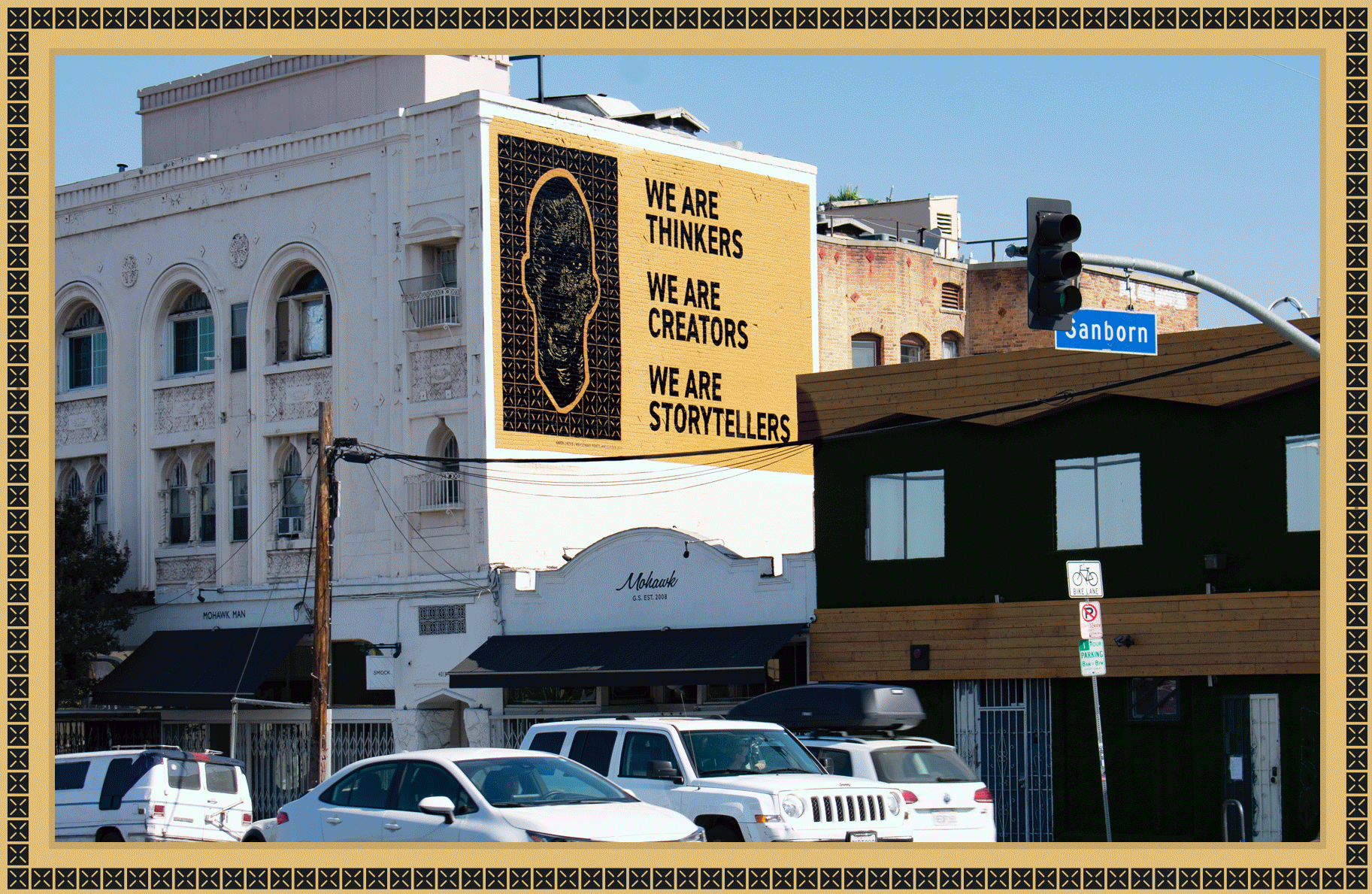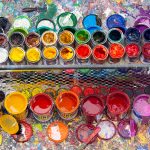Represent: Black Arts
Art has deep roots in American cities. Design movements, creative revolutions, endless style wars. They arrive in the imaginations of starving artists and hungry makers, manifested under the brilliant pressure of life in a metropolis.
Some people make it, and make it big. But for every Tom Sachs there are a million like-my-channel-and-subscribe-to-my-page hopefuls. And for every Kara Walker there are even more up-and-coming-but-never-gonna-get-there Black artists—especially women.
A career in the arts will always require thick skin, but for too long it’s also favored white skin. That’s why, faced with this reality and given the wide awakenings provoked by incomprehensible racial injustice, there have been much needed releases, calls-to-action in the advertising industry for representation, and the creation of organizations like Black Artists + Designers Guild.
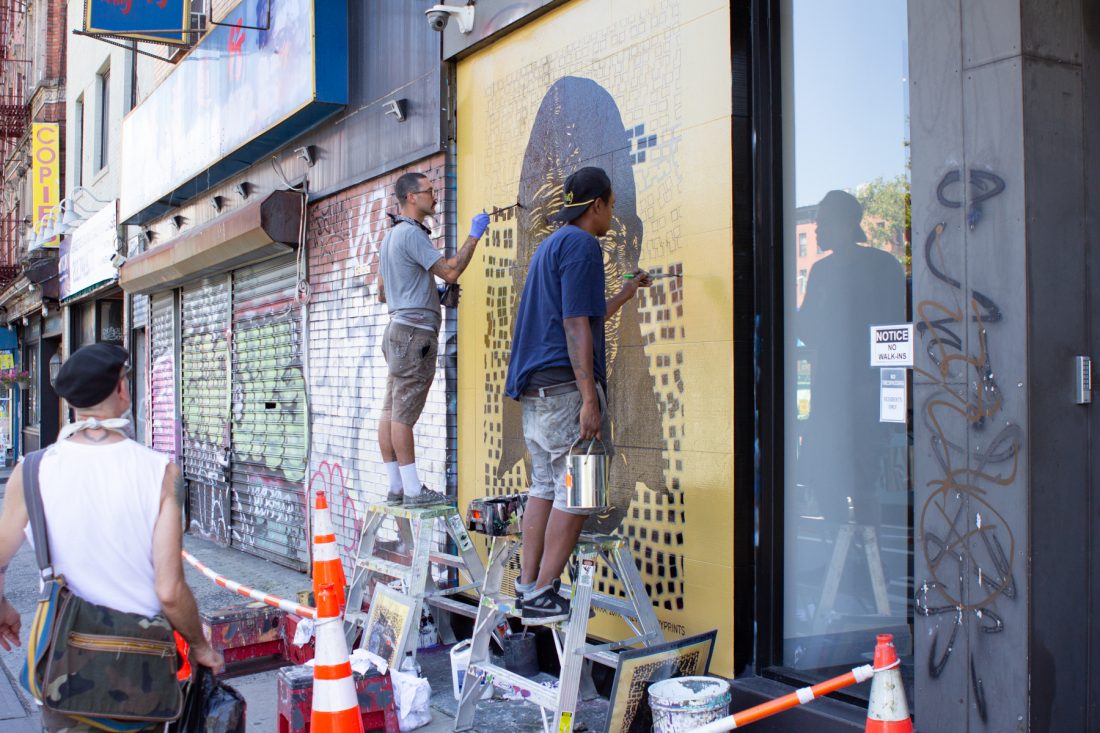
Brushin’ and crushin’ at 151 E. Houston St. on Manhattan’s Lower East Side.
It’s also why we confronted our own privilege, acknowledged the incredible exposure we enjoy as artists creating works on massive public scales, and made the decision to step aside and donate our space and spotlight to fellow creatives.
The result is Represent: Black Arts, the first manifestation of our local public arts initiative, Represent:, which spotlights original works by artists from underrepresented communities. For this we partnered with Malene Barnett, Founder of Black Artists + Designers Guild, and Karen J. Revis, printmaker and Guild member, to paint an original, unapologetically Black work on walls in Los Angeles and New York City.
Here we talk with both women about the significance of Black representation in art, design, and advertising, and what this moment means to them.
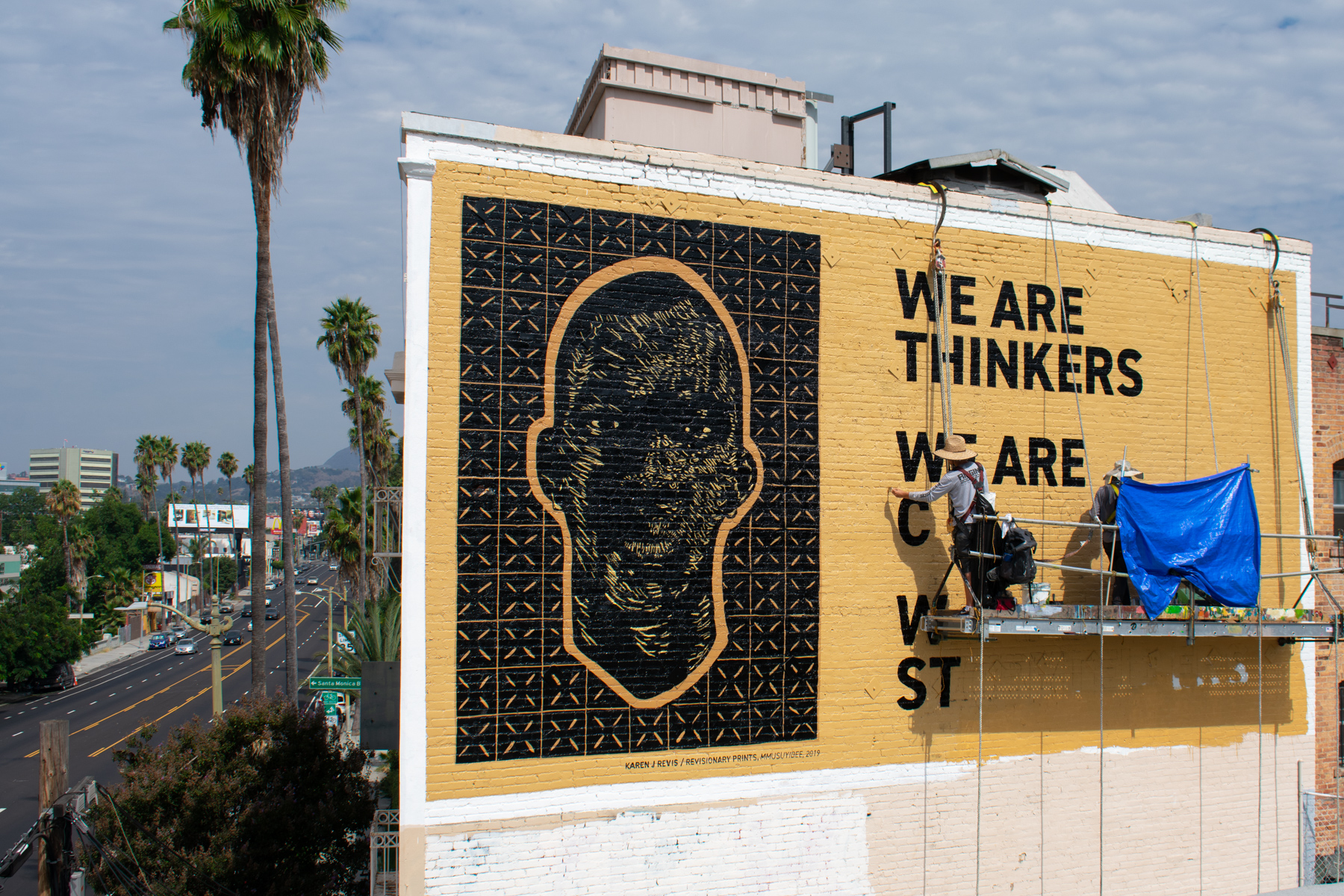
Gaze for days at 4019 Sunset Blvd. in Silver Lake, Los Angeles.
The pieces you created are titled MMUSUYIDEE and FIHANKRA, West African names with powerful symbolism. Tell us about them.
Karen J. Revis: My initial idea was to create images of young Black men who are proud. People often ask about the eyes I use in my images, and I wanted these men to have unflinching stares as if they are looking back at their viewers. These men want to hold the viewer’s gaze. They want to be seen. The African names and symbols came after. I want these young men to be protected, so I gave them names of what I wish for all Black men: MMUSUYIDEE means “that which removes bad luck,” and is a symbol of good fortune and sanctity; FIHANKRA is a house or compound and a symbol of security and safety typically found in Akan (Asante) architecture.
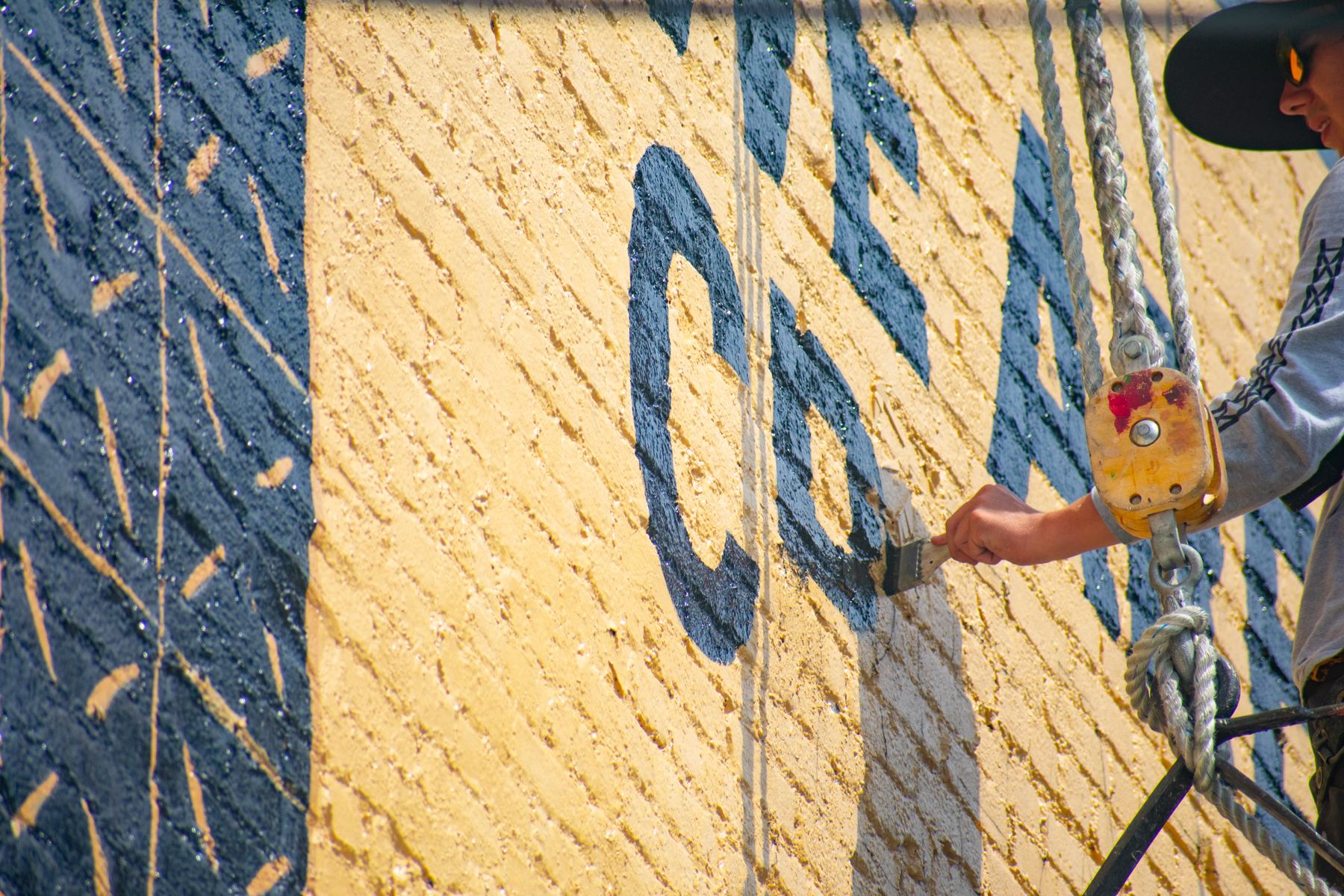
You’re a printmaker, painter, and patternmaker. In today’s digital-first world, what does a career in these spaces look like?
KJR: Honestly, printmaking the old-fashioned way that I learned in school wasn’t at all appealing to me. Once I familiarized myself with Adobe and I had the Internet’s world of unlimited images I became hooked. Almost every piece of art that I make is touched digitally in some way. It’s a wonderful jumping off point for me. To make the images Colossal used for the mural, I started with a thought of what I wanted the young man’s face to convey. Then, I went on a hunt through web images and I selected a silhouette, eyes, nose, and mouth from different faces. I put them together to make the image that I wanted and I used that image to make a linoleum cut. Old-school meets new-school. Social media has played a major role in expanding my audience in a way that galleries haven’t been able to. I am loving the control I have over the story that I tell through social media.

I want the message of my work to be unapologetically Black. I’m proud to be a part of this.”
– Karen J. Revis
Black Artists + Designers Guild was founded with the mission to “to combat the lack of representation of Black talent and culture in the design industry.” Why does representation matter in creative fields?
Malene Barnett: Representation in the arts matters because it helps to reinforce models of success for emerging and current Black artists, makers, and designers, and it provides creatives with role models in respective fields.
This certainly feels like a time of action. Have priorities or focuses changed for the Guild given recent swells of activism and solidarity in demands for diversity, inclusion, and justice?
MB: Our mission remains the same, which is to build an equitable and inclusive creative culture. Currently, we are fundraising to support our three initiatives; mission, creative incubator, and education funds. We are actively building partnerships with brands and companies, in various industries, who believe in our mission and understand in order to change the inequities long-term investments are needed.


Malene Barnett, Founder, Black Artists + Designers Guild
We want to be part of the industry, recognized and respected for our contributions to art and design. It’s our safe space to be us.
Both pieces of art share the same bold message: WE ARE THINKERS, WE ARE CREATORS, WE ARE STORYTELLERS. What do you hope people think, feel, or learn when they read those words?
KJR: I hope that the world can begin to see that people of color have rich lives and amazing stories to tell. The media doesn’t represent who we are. It’s assumed that we don’t have stories to tell. But we do, and the stories of our lives and our pasts are interesting and full. We’ve known it all along. It’s time for the world to get onboard.
What do you hope people experience when they look at these works?
KJR: I hope people stop and look and think. I am particularly fond of the young man in the durag because it’s such a charged image outside of my neighborhood. A durag is a cosmetic accessory, however outside of my Black/Latinx neighborhood it can instill fear. I especially want that young man to proudly and unapologetically look at everyone who passes him.
